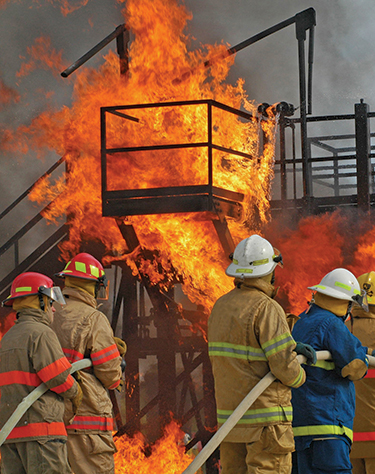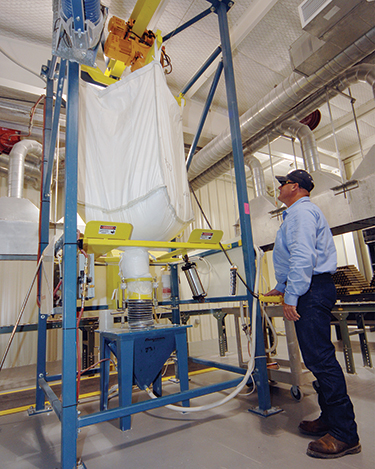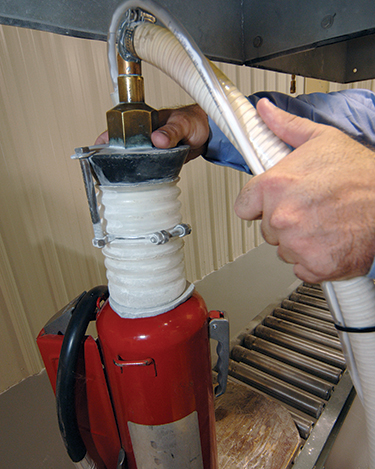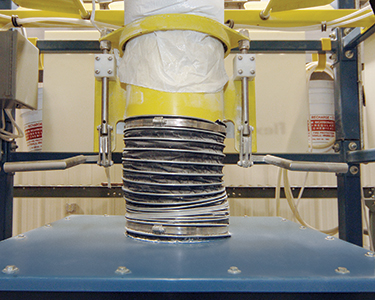 Click to enlarge
Click to enlargeTexas A&M's Brayton Fire Training Field trains more than 80,000 firefighters per year from the U.S. and about 50 other countries.
 Click to enlarge
Click to enlargeSodium-bicarbonate powder is transferred from a Flexicon bulk bag unloader, into a hopper and through a hose to refill canisters on conveyor line. TELE-TUBE® telescoping tube, between bag outlet and hopper, elongates the partially empty bag to prevent dead spots and flow restrictions. FLOW-FLEXER® bag activators (yellow plates) raise and lower bottom edges of the bag to promote total evacuation.
 Click to enlarge
Click to enlargeCanister, ready for refill, is fitted with two hoses: one for carbon dioxide or nitrogen, and one for sodium bicarbonate powder.
 Click to enlarge
Click to enlargeThe TELE-TUBE® telescoping tube promotes product flow and complete discharge by exerting continual downward tension on the bag as it empties and elongates.


 Click to enlarge
Click to enlarge Click to enlarge
Click to enlarge Click to enlarge
Click to enlarge Click to enlarge
Click to enlarge